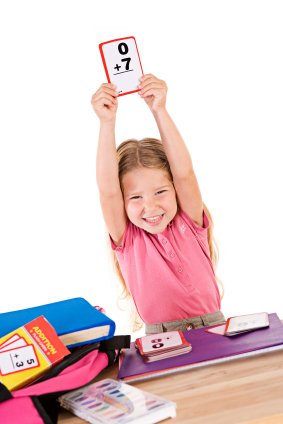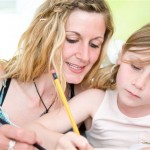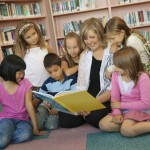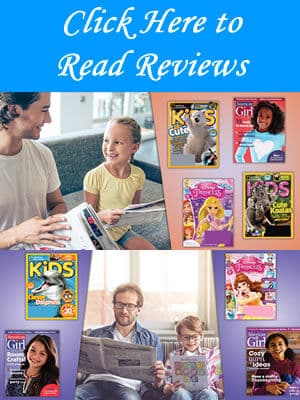Learning math should be fun. There are many games that teach math skills. Flash cards can be used to create games such as Concentration, Gin Rummy, and others. Here are some tips to help make math fun!
by Ann Bowers
 Homeshooling can be fun, and whenever possible, learning math should also be fun. There are many games that teach math skills, such as: War (using a deck of cards), Monopoly, Blackjack (21), Yahtzee, Chess, and others. Flash cards can be used to create games such as Concentration, Gin Rummy, and others. Bingo and Go Fish games are great for ages 5 and up. You can make simple Bingo cards for children ages 3-4 to help them recognize numbers, colors, and shapes. Any game that uses a board and/or dice will help children learn to count.
Homeshooling can be fun, and whenever possible, learning math should also be fun. There are many games that teach math skills, such as: War (using a deck of cards), Monopoly, Blackjack (21), Yahtzee, Chess, and others. Flash cards can be used to create games such as Concentration, Gin Rummy, and others. Bingo and Go Fish games are great for ages 5 and up. You can make simple Bingo cards for children ages 3-4 to help them recognize numbers, colors, and shapes. Any game that uses a board and/or dice will help children learn to count.
There are tons of computer games that make learning basic math facts and concepts exciting and enjoyable. Most children love using the computer, so encourage them to use any appropriate learning game. There are programs that teach entire subjects, such as the CD program “Fractions.” The computer provides fabulous visuals of fractions and manipulates them in ways that create understanding of this difficult topic. Also, the computer is endlessly patient if the child need re-teaching of any subject.
Find a large jar and fill it with small toys or: candy, pennies, beans, small pebbles, acorns, bottle caps, small jar lids, beads, or any small item. The children should estimate how many items are in it. After they estimate, they should count the items to see who came the closest to guessing the correct amount.
For the little ones, Sesame Street (on TV) teaches math concepts, as does CyberChase for 8 to12-year-olds. The more fun learning is, the faster children will learn and the more eager they will be to participate.
The kitchen is a great place to learn about quantities and proportions. Ask a child to bring you four of something or a “half dozen” raisins. Allow children to use plastic dishes, measuring cups and spoons, and utensils to measure and count ingredients for simple recipes or use beans, rice, or sand, just for fun. Add a kitchen timer, egg timer, scale, ruler, measuring tape, and thermometer so that children can explore weight, length, and time concepts.
Trays with buttons, beads, feathers, plastic shapes, and other interesting objects let children sort by size or shape, or create a group with a particular number of items. With an assortment of small food containers and jar lids, children can match sizes and shapes. They can make matching pairs from magazine pictures and egg cartons cut in half or a pile of socks, mittens, or shoes. Feely bags with different-sized blocks, small toys, or outside objects let children learn to identify and describe objects based on touch, using size, shape, and texture words.
Rote Learning vs. Conceptual Learning
While conceptual learning is the most important type of learning in mathematics, rote learning also plays a part in math education. Rote learning focuses on memorization. Most concepts and skills should be learned through conceptual learning, which includes “discovering” how math concepts are used to solve problems, “exploring” math concepts like patterning, volume, and measurement, and “hypothesizing,” which is making a guess regarding a solution to a problem (i.e.; the hypothesis) and then testing to see if the guess is correct. Mastering the skills is where rote learning comes in. Rote learning should be used to master skills such as: memorization of basic math facts, counting, practice of skills learned conceptually, remembering how to solve multi-step problems or use multi-step procedures. Here are some suggestions of rote learning activities.
Counting Tips
Children should practice counting daily, starting at age 2 and continuing until they can count to 100,000 without mistakes (not all at once). Rote daily counting is necessary, but it doesn’t have to tedious, for example, try counting from one number up to another: “Let’s count from 50 to 120 today.” Learning to skip count by 10s, 5s, 2s, 3s, 100s, 1000s (in that order) is important also. Skip counting should be taught conceptually, using manipulatives, a number line or a number chart, and then practiced by rote. Each child should have his or her own 1-100 number line and 1-100 number chart. Ceramic tiles, 1” by 1,” can be used. Using a permanent marker, write numbers on the tiles. Start by giving the child 1-10. When he or she can put those in order, add 11-20. When those are mastered, in order, add 21-30. Continue in this manner until the child can place 1-100 tiles in order, in one long line, or in 10 lines of 10. Counting can be practiced while jumping rope, riding in the car, doing jumping jacks, or throwing a ball.
Give your children practice counting things. Counting can be incorporated into daily activities: counting money, counting toys or game parts, counting Cuisinaire rods or Unifix cubes, counting on a monthly calendar, counting how many utensils are needed for dinner, etc. Children can count candy, poker chips, the hearts (spades, clubs, diamonds) on face cards in a deck of cards, dots on dice, beans, or pennies. Games like Chutes and Ladders or Monopoly will give lots of practice counting.
Children often have trouble learning "transition" number names, such as the number that comes after the 9s in the two digit numbers; e.g., after 29, 39, 49, even though they can count by tens: 10, 20, 30, 40, etc. It takes extra practice to learn this. You have to help them understand that what comes after, say, 69, when counting by one’s (70) is the same thing that comes after 60 (70) when counting by 10’s. They need lots of practice to understand that when you finish the forties you go into the fifties, when you finish the twenties you go into the thirties. So give extra practice in counting, starting at 7 in each "decade"; i.e., 27, 28, 29, 30, 31, 32 or 57, 58, 59, 60, 61, 62, 63.
Number and Number Name Recognition
After number names are taught conceptually, there are many ways to practice. Flash cards can be used to teach numbers (i.e.; 5, 13, 27, 99, 387, 942, 1063), number names (i.e.; four, six, ten), and ordinal number names (i.e.; first, third, ninth, fifteenth, 8th, 2nd, 11th). Don’t forget to teach 0.
Use these tips to make learning math fun!!
Bio for Ann Bowers
Ann Bowers has been an elementary school teacher, in kindergarten through 8th grade, for 20 years. She was a Bilingual Education Grant Project Coordinator for seven years and a school principal for seven. She has a B.A. in English, an M.A. in Education, and holds California Life Teaching Credentials and specialist credentials in Remedial Reading and Teaching English as a Second Language. She is retired and has started a second career as a freelance writer.
No part of this article may be copied or reproduced in any form without the express permission of More4Kids Inc © 2007
 Homeshooling can be fun, and whenever possible, learning math should also be fun. There are many games that teach math skills, such as: War (using a deck of cards), Monopoly, Blackjack (21), Yahtzee, Chess, and others. Flash cards can be used to create games such as Concentration, Gin Rummy, and others. Bingo and Go Fish games are great for ages 5 and up. You can make simple Bingo cards for children ages 3-4 to help them recognize numbers, colors, and shapes. Any game that uses a board and/or dice will help children learn to count.
Homeshooling can be fun, and whenever possible, learning math should also be fun. There are many games that teach math skills, such as: War (using a deck of cards), Monopoly, Blackjack (21), Yahtzee, Chess, and others. Flash cards can be used to create games such as Concentration, Gin Rummy, and others. Bingo and Go Fish games are great for ages 5 and up. You can make simple Bingo cards for children ages 3-4 to help them recognize numbers, colors, and shapes. Any game that uses a board and/or dice will help children learn to count. 









Add Comment